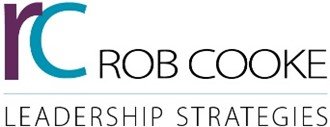
Leading Remote Staff and Teams
As a result of the recent health concerns related to the spread of the Covid-19 virus many employers are telling their people to work from home. Having employees work remotely is not new, however, for many organizations this is a shift from their normal employment practices, and they need to quickly learn how to lead differently. While an employee working from home is less likely to catch or spread the virus, it is still important that they are completing work effectively and contributing to the organization.
The core responsibilities of leadership, (creating clarity of expectations, enabling performance and providing an inspirational environment) will not change, however, you will have to carry these out differently. In the following I have attempted to provide some recommended practices for ensuring a successful remote employee environment.
Creating Clarity of Expectations
The number one reason that we don’t get what we want or need from our people is because you have not adequately defined expectations. Expectations need to be defined at multiple levels:
Clearly defined deliverables including priorities, quality, timelines and deadlines
Behaviours and activities that will contribute to achievement of the defined deliverables and deliver the desired results and outcomes.
Clearly defined expectations are even more important for remote staff as there is less opportunity for testing and monitoring what is being done and to ensure expectations are understood as intended.
Desired results and outcomes from the work they are doing
Regardless of the work being performed, people need to understand why it is important and how it will contribute. Understanding how their work will contribute to a defined result or outcome is critical for creating a motivational and inspirational environment. This is especially true when people are working remotely, where the direct impact they are having is not readily evident. Take time to reinforce the value and contribution their work is making to longer term outcomes.
Clearly defined deliverables including priorities, quality, timeliness and deadlines
In the workplace there are usually immediate opportunities for course correction. If we do not provide enough clarity of deliverables, we can usually observe when things are going ‘off track’ or priorities and timelines are not clear, and we can redefine expectations or provide increased clarity. When people are working remotely there are fewer opportunities for frequent interaction and there are less opportunities for course correction. Ensure clarity of what you want, what it looks like or doesn’t and when you need it. Once communicated it is important to test for understanding to ensure you have effectively communicated what you want. Test of understanding by asking questions related to how they are thinking of proceeding and what challenges they might encounter. The answer to these questions will tell you the extent to which they have a clear understanding of the expectation you communicated.
Behaviours and activities that will contribute to achievement of the defined deliverables and deliver the desired results and outcomes.
In the workplace, we have defined and expected behaviours such as; when we arrive, when we leave, take breaks, how and when we interact with others, etc. With remote employees we have no pre-established behaviours and these need to be defined. Some people are very self-disciplined and are able to keep their focus whether they work in an office or at home. For others, this is a real challenge. I have many people tell me that they can’t get focused at home, that they are constantly being distracted by children, pets, the refrigerator and other temptations. To help these people you will need to define guidelines as to when people are available and when they will be doing work. You need to help people establish routines that they can become comfortable with and you need to help them implement and sustain these routines. Routines include the number of hours per day the person is expected to be “at work”, when they need to be available by phone or on-line, when they need to ‘check-in’ with you regarding work progress, etc.
Enabling Performance
Enabling performance is about ensuring people have the capability to perform. You need to ensure that your people have the skills, knowledge, processes, systems and capacity that will enable them to deliver on defined expectations while working remotely. The following are some key contributors to ensuring capability and enabling performance with remote staff.
Access to and Ability to Use Technology
Ongoing communication with remote staff is critical. Identify when (frequency) and how (technology) you will be in contact with each person. This could be a phone call every morning, a Skye meeting every two days, or an all team meeting on Friday morning using Zoom. What ever the technology being used it is important to recognize that for many people this is new, or they have had limited exposure. Setup on-line training sessions to help staff get comfortable with how to use the technology.
Managing Capacity
One of the greatest challenges facing many people in the workplace is that they have way more on their plates than could ever be accomplished. This has led to people feeling overwhelmed and feeling a great deal of stress. You should review your staff’s task or project list regularly and assist them with an order of importance. Have them prioritise and then adjust accordingly, ensuring that the list is reasonable and achievable.
Health and Wellbeing
These are stressful times and personal health will be negatively impacted if people don’t take the time to look after themselves by exercising, taking time out during the day for walks, eating right, etc. You should remind and encourage people to maintain a healthy work-life balance and lifestyle. Ask questions about what they are doing to stay healthy and fit. Ask how they are feeling and how they are coping with these crazy times. You don’t need to have the answers, you just need to listen and acknowledge you are hearing them.
Creating an Inspirational and Motivational Environment
Communicate, Communicate, Communicate
This a time of unknowns, fear and skepticism. Your remote staff need to feel that you are looking after their interests, are understanding the stress they are under and are concerned about their wellbeing. To enable an inspirational environment for them, you need to reinforce the importance and contribution of their work, how it adds value and makes a difference. You need to be proactive in hearing what people’s questions and concerns are. While this is important in any setting, with remote employees this is critical and requires that you set up regular conversations or on-line meetings with each person and to ask and actively listen:
How are things going?
What are your greatest challenges?
How can I help?
In the remote environment you will have limited ability to monitor people’s work. You will need to create a sense of ownership whereby people feel they are trusted and have the autonomy to do what is right. You will need to encourage people to take accountability for their performance and results and you will need to regularly and honestly praise them for their contribution.
Team Support
In addition to the above three areas of leadership responsibility you will also need to thing about helping your overall team and encourage colleague interaction. An important role of leaders is to keep remote people from feeling isolated. Without the opportunity for lunch and coffee break interaction and conversation you need to make the most of virtual meetings both formal and informal to strengthen team bonds.
A deliberate approach to building and maintaining the team is of paramount important. In a virtual team a planned approach as to how and when communication should occur, and the removal of any barriers is critical. It is important to provide structure to how the team interacts, what kind of communication tools are needed and how much face-to-face time is needed.
Encourage virtual coffee breaks and lunches where colleagues have an opportunity to interact. Suggest that they should avoid work related topics. They should be asking each other how their families are doing, what they are doing in their spare time while in isolation: what they are watching, reading, repairing, cleaning. The purpose of these interactions is to build the team and colleague relationships.
You should also be ensuring that formal team meetings continue on a regular basis using technology. Monday morning weekly kick-off meetings and topic focused sessions should be scheduled. During virtual weekly wrap-up team meetings weekly goals and expectations are laid out. Team members report out on what they accomplished the previous week and what is planned for the upcoming week. Performance can then be measured against these goals, both individually and team based.
The team should discuss how it wishes to communicate, provide feedback, acknowledge each other, hold each other accountable, and best work together. When an issue comes up in the future, you can now ask: What agreement can we make to ensure this doesn’t continue to cause frustration? Do we need to tweak any of our previous agreements to capture this new learning?
Remote teams have to build time for small talk into group meetings. Try to spend a couple minutes at the start of each meeting discussing personal updates. Ask that team members send in recent photos of themselves and have them assembled into a slide show to view at the meeting.
About the Author: Rob provides one-on-one advice and coaching that enables leaders to address difficult and challenging situations. Drawing on a strong background in business and organizational development, he brings an exceptional depth of organization, business and leadership wisdom to facilitate the best decisions and outcomes. He is an International Coaching Federation Accredited Executive Coach (Royal Roads University) and hold a master’s degree in Business Administration.
March 31, 2020 | Leadership Development
